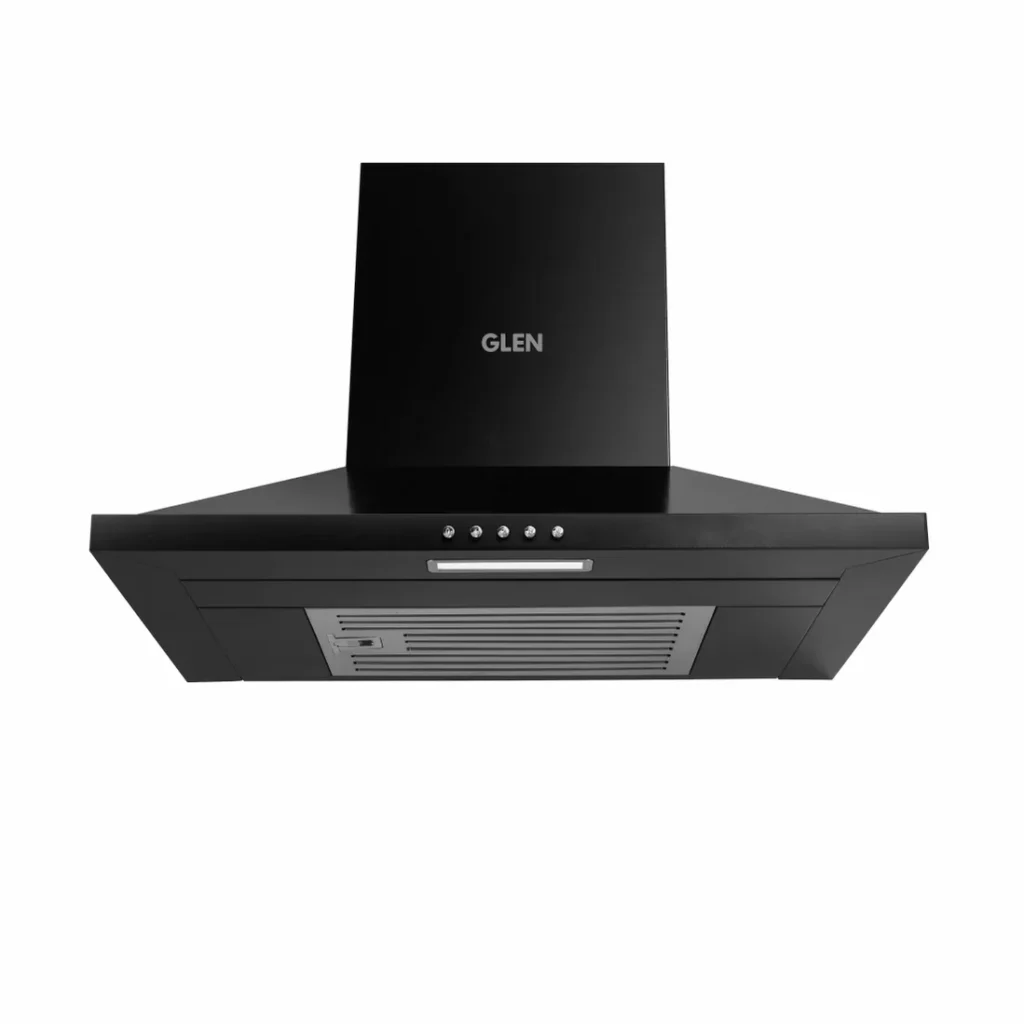The kitchen is where essence, aroma, and warmth meet. It is also the place where smoke, grease, and unwanted gases escape daily. Cooking, particularly Indian cooking, comprising frying, tadka, or grilling, can possibly release airborne particles of all sorts. If no ventilation is present, the pollutants get contained within the house, lowering the freshness of indoor air. Among the best available solutions to keep a cooking area clean and breathable is installing a chimney for kitchen use.
This guide discusses how chimneys clean indoor air, what the best chimney features are that allow it to function, and how the kitchen chimney cost relates to its benefits.
What Happens to Air While Cooking
Food cooking is not the sole purpose of cooking. Cooking also initiates chemical and physical reactions, which release pollutants to the environment. Boiling, roasting, or frying every time leaves the following components in your indoor environment:
- Fine particles like PM2.5 and PM10 originate from oil burning and smoke.
- Volatile organic compounds (VOCs) are emitted from hot oils, spices, and fuels.
- Nitrogen oxides and carbon monoxide are released when you use some gas or solid fuels.
- Grease and oil drip in the air prior to settling on furniture, cabinets, walls, and tiles.
- High steam and humidity maintain the kitchen humidity and enhance the development of mould or mildew.
Eye, throat, and nose irritation occurs due to these contaminants. Prolonged exposure to this air may result in respiratory difficulties such as bronchitis and asthma in the long term. Symptoms are acute in children, elderly persons, or allergic people.
Ready for the next big insight? Dive into this related post made just for you!
How a Chimney for Kitchen Enhances Indoor Air Quality
Today’s chimneys exhaust cooking fumes and smoke and enhance the quality of the air.
1. Removal of Harmful Gases and Smoke
When you cook at high temperatures, there is instant smoke production. A chimney that is placed over the stove traps it instantly and vents it outside through a duct or purifies it before allowing cleaner air to enter the house again. A chimney utilizes smoke propagation prevention and keeps a healthier home.
2. Odour Control and Residual Smells
Anyone who deep-fries snacks or cooks fish knows how long the smell remains in the home. These are smells that indicate the presence of volatile compounds. A chimney removes odours within minutes of cooking, and the kitchen and home are clean-scented.
3. Capture of Grease and Oil Mist
One of the largest Indian kitchen issues is the greasy sheen on cabinets and ceilings. This happens because of oil droplets that are released to the air while frying. Baffle filters or auto-clean technology chimneys capture these droplets before they drip, reducing cleaning time and graying of surfaces.
4. Excess Humidity Removal
Cooking produces steam, and without proper ventilation, this steam condenses on walls and ceilings. A chimney reduces the humidity that dries the kitchen and prevents mould and mildew from growing.
5. Improved Health for the Family
Cleaner indoor air reduces the risk of respiratory distress. People having asthma and allergies can relate to the issue. Less exposure to smoke means less irritation to throats and eyes, so cooking becomes easier.
6. Easier Cooking
In addition to health benefits, chimneys ensure more comfortable cooking. No sneezing, runny eyes, or sweating due to excessive heat and steam. The kitchen feels cooler, cleaner, and friendlier.
Factors That Make a Kitchen Chimney Efficient
The efficiency of a chimney relies on critical factors. Keep these in mind while making a purchase:
- Suction power: For Indian kitchens, given frequent frying/grilling, opt for a chimney having 1000-1500 m³/hr suction.
- Filter type: Baffle filters are best suited for grease separation in Indian cooking. Mesh filters are cheaper but need to be cleaned frequently. Carbon filters are best suited for ductless models.
- Ducted vs recirculating: Ducted chimneys exhaust air outside, efficiently eliminating smoke and dampness. Recirculating chimneys purify and recycle air, suitable when outdoor ducting is impossible.
- Noise level: Noisy chimneys are irritating. Newer models minimize noise without compromising suction.
- Cleaning and maintenance: For maximum chimney performance, regular cleaning is imperative. Auto-clean, oil catchers, and filterless models make maintenance easy.
- Size and place: To perform better, the chimney should be placed 55-75 cm above the stove so that it surrounds the cooking hob.
Brands such as Glen Appliances prioritize utility functions at the expense of performance, efficiency, and easy maintenance.
Evidence From Studies
Evidence supports the use of chimneys to enhance indoor air quality. In one such study, a multi-year field study in the Indian countryside, well-ventilated kitchens contained much lower levels of PM2.5. Chimneys minimize exposure to toxic smoke, making the house safer.
These observations validate that chimneys are not mere convenience appliances. They directly relate to healthier living, reducing the level of pollutants we inhale. There are new brands, such as Glen Appliances, which manufacture chimneys for Indian kitchens, controlling oil- and spice-based cooking.
Kitchen Chimney Cost in India
Among the frequent queries of homeowners is the kitchen chimney cost. It is size, suction power, design, and other aspects.
- Budget models: ₹5,000 to ₹10,000. These have modest suction capacity and baffle or mesh filters.
- Mid-range models: ₹10,000 to ₹20,000. These have increased suction, auto-clean options, curved glass, and reduced noise.
- Premium models: ₹20,000 and above. These have high suction (above 1200 m³/hr), motion sensors, touch controls, filterless technology, and superior designs.
Chimney prices might have additional installation charges and ducting. Some brands offer free installation, while others might charge an additional amount. Some firms, like Glen Appliances, give clear price quotes to guide customer decision-making.
Conclusion
A chimney for kitchen is one of the most useful kitchen appliances for cleaner air indoors. With the removal of smoke, fumes, grease, and odors, it immediately boosts cooking convenience and house atmosphere. Kitchen chimney cost also differ from model to model, but in total, with long-term health and cleanliness advantages, the price is justified.
A good chimney is a daily blessing to families through cleanliness, safety, and convenience.
There’s more to learn—explore content that inspires progress and innovation.






